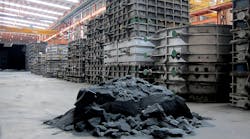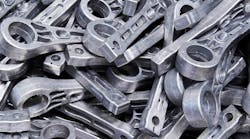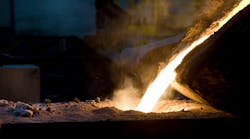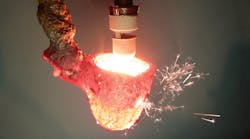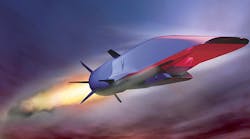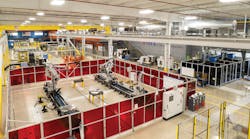July 23, 2007 — U.S. manufacturers' demand for industrial castings will total $35 billion by 2011, increasing 1.1% annually, according to research by an industrial market research firm.
The Freedonia Group Inc. explains that the growth in the industrial castings' market value over recent years has been attributable to rising metal prices, but metal prices are expected to moderate over the coming four years, so demand for castings will slow down from the previous rate of expansion.
Shipments of industrial castings will rise at a comparable 1.1% rate through 2011, reflecting demand. Shipments of castings will rise less than 1% during the period, which would be a reverse of a decline in shipments from 2001 through 2006.
The study sees ferrous castings continuing to lose market share — value and tonnage — to nonferrous castings. Automotive castings, for example, will continue to exhibit material conversion from iron and steel to aluminum and magnesium. The latter have gained market share in recent years as designers seek to reduce vehicle weights and increase fuel economy.
The best prospects for producers of industrial castings reportedly will be found in markets for smaller castings, including aerospace, electrical, and electronic equipment. Aerospace equipment demand is being driven by increased spending for commercial and military aircraft, as well as missile systems. High-tech advances will be responsible for a wide range of casting applications, including computer and wireless devices, medical electronics and medical instruments, mobile telephones, video games, and electronic packagings.
Industrial Castings is a 170-page report published this month, and available for $4,400.00. Contact The Freedonia Group Inc. for more details: Tel. 440.684.9600; e-mail to [email protected]; or visit www.freedoniagroup.com.
Latest from Materials
Latest from Materials
Melt/Pour
Modeling Aluminum Oxidation
Feb. 27, 2024
Materials
Quiz: Know the Metals!
Aug. 29, 2023
Issues and Ideas
OSHA Cites Schumann for Blast
Aug. 22, 2023
Melt/Pour
Reducing Alloying, Improving Castability
July 17, 2023
Materials
SinterCast CGI Volume Hits a New High
July 11, 2023
Issues and Ideas
LIFT, DoD Renew Co-Op
May 17, 2023

